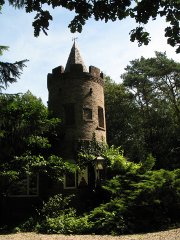 The early 20th century was the heyday of Dutch polarisation. Unions, universities, newspapers, magazines and broadcasting corporations were founded, all based on a certain religion or ideology. The three main pillars were Protestantism, Catholicism and Socialism.
The early 20th century was the heyday of Dutch polarisation. Unions, universities, newspapers, magazines and broadcasting corporations were founded, all based on a certain religion or ideology. The three main pillars were Protestantism, Catholicism and Socialism.
One of the remnants of this great societal movement is De Paasheuvel campground (the Easter Hill), on which hacker conference Hacking at Random is held. De Paasheuvel was started in the 1920s as the first communist campground. And although the campground is now a commercial venture that tries not to put too much emphasis on its past, there are still a few clues here and there that tell the visitor of the history of the place where many a left-wing politico received part of their training.
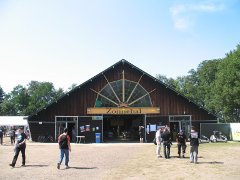 The little castle-like house shown in the photo above is called the Voorpost, and it predates the campground by a decade and a half. It was built as a Summer place of the Rolandes Hagendoorn family in 1906, and bought by the Arbeiders Jeugd Centrale (Workers Youth Center) in 1922.
The little castle-like house shown in the photo above is called the Voorpost, and it predates the campground by a decade and a half. It was built as a Summer place of the Rolandes Hagendoorn family in 1906, and bought by the Arbeiders Jeugd Centrale (Workers Youth Center) in 1922.
The Zonnehal (Sun Hall) was built in 1939 in the style of the Amsterdamse School, and is used during HAR as one of the conference halls.
 The grounds also hold a tiny wild life garden called Heemtuin de Heimanshof, which was founded by the AJC, and maintained by them for a long time. Although former AJC members still work on the garden, Jonge Socialisten (the youth branch of the socialist and social democratic parties) and other volunteers now help with the heavy lifting.
The grounds also hold a tiny wild life garden called Heemtuin de Heimanshof, which was founded by the AJC, and maintained by them for a long time. Although former AJC members still work on the garden, Jonge Socialisten (the youth branch of the socialist and social democratic parties) and other volunteers now help with the heavy lifting.
(These and other photos should appear in higher resolution in our Flickr account after Sunday.)

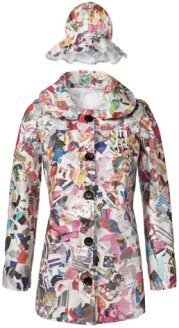

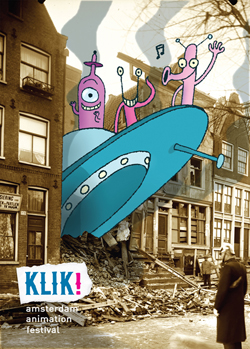
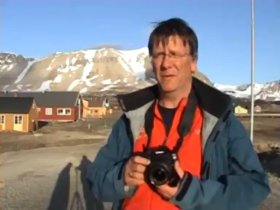 Biologist Maarten Loonen from Groningen figured that it might take a while before the Google Streetview cars and bikes venture deep within the Arctic circle.
Biologist Maarten Loonen from Groningen figured that it might take a while before the Google Streetview cars and bikes venture deep within the Arctic circle. 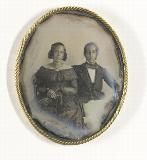
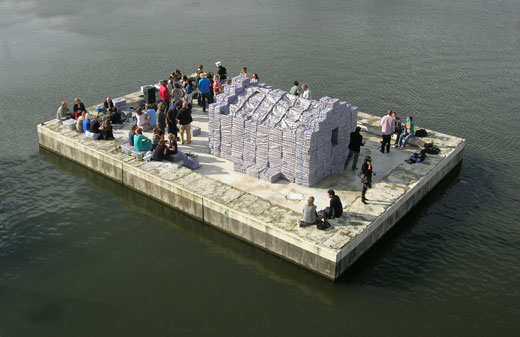
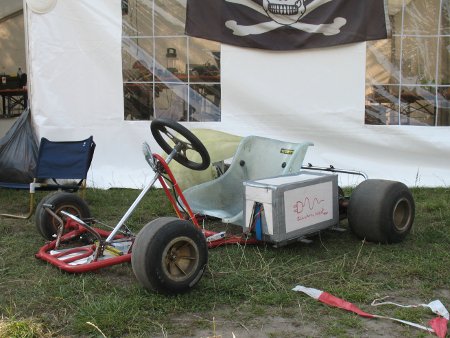
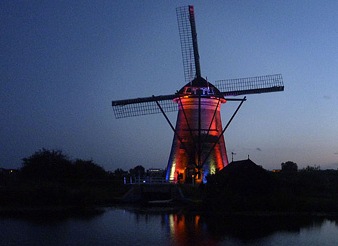
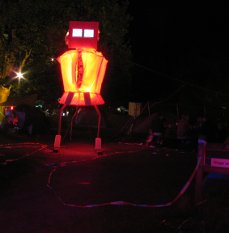 I just turned away from the lock-picking talk, as the tent was absolutely packed (me being 5 minutes late). I don’t know how many people fit in these convention tents, hundreds, perhaps thousands, but that is the amount of people that after tonight may know how to break every lock you own.
I just turned away from the lock-picking talk, as the tent was absolutely packed (me being 5 minutes late). I don’t know how many people fit in these convention tents, hundreds, perhaps thousands, but that is the amount of people that after tonight may know how to break every lock you own. The early 20th century was the heyday of Dutch polarisation. Unions, universities, newspapers, magazines and broadcasting corporations were founded, all based on a certain religion or ideology. The three main pillars were Protestantism, Catholicism and Socialism.
The early 20th century was the heyday of Dutch polarisation. Unions, universities, newspapers, magazines and broadcasting corporations were founded, all based on a certain religion or ideology. The three main pillars were Protestantism, Catholicism and Socialism.  The little castle-like house shown in the photo above is called the Voorpost, and it predates the campground by a decade and a half. It was built as a Summer place of the Rolandes Hagendoorn family in 1906, and bought by the Arbeiders Jeugd Centrale (Workers Youth Center) in 1922.
The little castle-like house shown in the photo above is called the Voorpost, and it predates the campground by a decade and a half. It was built as a Summer place of the Rolandes Hagendoorn family in 1906, and bought by the Arbeiders Jeugd Centrale (Workers Youth Center) in 1922.  The grounds also hold a tiny wild life garden called Heemtuin de Heimanshof, which was founded by the AJC, and maintained by them for a long time. Although former AJC members still work on the garden, Jonge Socialisten (the youth branch of the socialist and social democratic parties) and other volunteers now help with the heavy lifting.
The grounds also hold a tiny wild life garden called Heemtuin de Heimanshof, which was founded by the AJC, and maintained by them for a long time. Although former AJC members still work on the garden, Jonge Socialisten (the youth branch of the socialist and social democratic parties) and other volunteers now help with the heavy lifting.